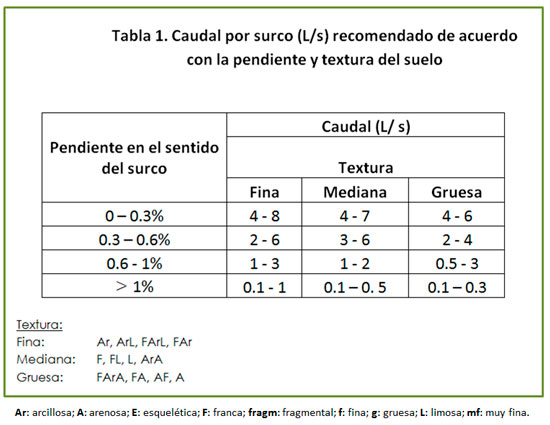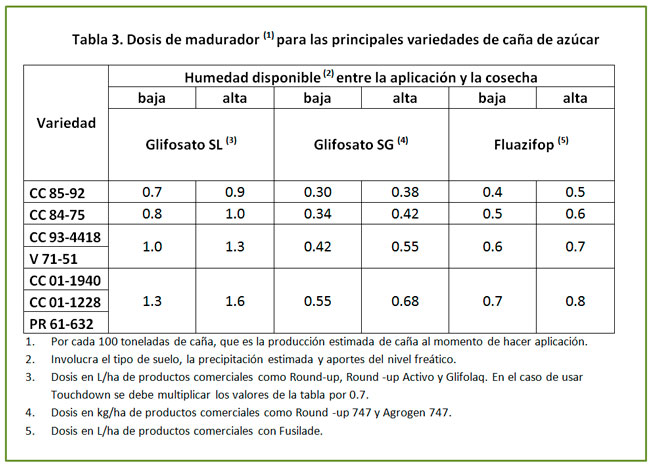The Sugarcane Research Center, Cenicaña, offers some recommendations to take into account in the work of irrigation, mechanization and fertilization in the cultivation of sugarcane during prolonged periods of low rainfall.
Recommendations:
For irrigation
Before:
- Plan the irrigation of the dry period.
- Schedule the repair and maintenance of the irrigation network, including the filling of reservoirs and the cleaning of conduction channels.
- Agree on shifts for capturing surface water with users of the same water source.
- In soils with a high content of ballast or rock fragments and where you have pipes with gates, install low-cost hoses with drippers or perforations.
- In renovation lots, perform precision leveling work on two slopes.
- In cracked soils, water more frequently, according to the water balance, to avoid excessive cracking. The rapidly usable water surface (LARA) in these soils is lower and the water balance translates into more frequent irrigations.
During:
- Carry out the administrative control of irrigation.
- When using the hydric balance For irrigation scheduling, the following should be taken into account:
- During the dry season, it is necessary to be precise with the application of irrigation when the balance demands it.
- You do not necessarily have to wait until the soil water sheet (LAS) is at zero or close to zero to irrigate. In prolonged dry periods, irrigation should be started in advance to avoid water deficit in the crop.
- It is recommended to adjust the flow rates to those suggested in the Tables 1 and 2, to make a rational use of water, according to the age of the cane.

- If economically viable, use sprinkler irrigation for germination, crop establishment, and canes for up to four months. In extreme cases of drought, sprinkler irrigation can be used for up to eight months. Where sprinkling is not possible, in the sprinkling irrigation and in the first irrigation after hilling, guide the water and remove obstacles (clods, stones or weeds) along the furrows.
- In furrow irrigation, shape the grooves in a W shape or, failing that, shape them into a broad-based trapezoid.
- In extreme cases of low water availability, apply continuous or rapid-advance irrigation; and if possible increase the frequency.
- On templates, especially on fine textured floors, use alternate row irrigation, increasing the flow / furrow by 1 l / s. In basins it is also possible to irrigate by alternate furrow if reduced flow is used.
- Wherever the irrigation with reduced flow, place the water in the middle of the street and alternate the streets for the next irrigation.
- In socas:
- Perform the first irrigation at 2.5 months of age.
- With grounding at the 4 x 1, place the water in two of the four streets without waste.
- With grounding at 2 x 1, place the water in one of the two streets without waste and alternate the street for the next irrigation.
- Use the pulse irrigation (3 to 4 pulses) where there are pipes or polytubulars with gates.
- Plug the grooves at the end to avoid losses.
- Reuse excess water in irrigation.
- Distribute the chopped cane waste to conserve soil moisture.
For mechanized work
Before:
- Use the detailed study of soils to identify the depth of the light texture profiles and establish the optimum tillage depth, with which water percolation is not encouraged. Try to make the break about 10 cm above the profile with a light texture.
- In extreme drought conditions, evaluate the risks of renewing, since the little availability of water for the irrigation of the establishment of the crop could affect the germination of the plant. Make the planting plan coincide with the availability of water for irrigation or the time of the rainy season.
- Evaluate the heterogeneous distribution of aggregates. In an adequate sequence of tasks, a presence of soil particles of 10, 2, and 0.5 cm in average diameter must be obtained, in similar proportions of weight.
During:
- Avoid intensive tillage of the soil during renovation operations, since a soil that is too soft is susceptible to erosion and degradation of organic matter.
- Bear in mind that in soils with low moisture content the power requirements of the machinery increase and, consequently, fuel consumption increases.
- In dry periods soil compaction is less during harvesting. This makes it possible to postpone the work of clearing the socas, one or two months, to avoid high water consumption with the first irrigations.
For fertilization
Before:
- Good potassium nutrition ensures efficient water use. To adjust the application rate of potassium and nitrogen, the recommendations offered by the SEF should be followed.
- Preferably use ammonium nitrate or liquid UAN solution as the nitrogen source.
During:
- In templates and socas, make one of the establishment irrigations coincide with that of accompanying fertilization. This irrigation should be light (sheet between 20-30 mm)
- If fertilization is mechanized, irrigation should be done after fertilization; but if the fertilization is manual, the irrigation must be done before this work. The proximity between irrigation and fertilization is of utmost importance since available water is required in the soil for fertilization to be efficient.
For the use of ripeners
Before:
- Analyze each luck in which the ripener is going to be applied to select the product and the dose according to the variety, the cut number, the estimated production (detailed capacity), the type of soil and the age.
- If possible, carry out an aerial survey to have a better perception of the development of the crop and detect strips of sandy soil where it is counterproductive to apply ripener (growth regulator) in drought conditions.
- Inform the zone managers and suppliers of the ripener application in advance.
- Use the results of the pre-harvest evaluations to decide the application or change of ripener.
- Carry out strict supervision of the work.
During:
- Avoid the application of ripeners in templates with less than 11 months of age and in socas with less than 10.5 months. In exceptional cases, 10 months of age is taken as the minimum application age.
- In the case of alternative ripeners, the application is made around 9.5 months of age of the crop to allow the product longer to act.
- Reduce the ripening dose between 20% and 40% of that calculated.
- Using mixtures of traditional ripeners with alternatives (biostimulants)
- In areas highly affected by drought, such as the foothills, in young cane and with low estimated cane production, apply alternative ripeners such as foliar based on phosphorus and potassium.
- Harvest in a range of 4 to 8 weeks after application of the ripener and more frequently between weeks 5 and 6.
- Supervise the cutting height in such a way that it is removed from the natural point of break or maximum, leaving two internodes attached to the bud.



More information:
Contact:
Agronomy Program
(57-602) 5246611 ext 5130
Cali, Columbia.












